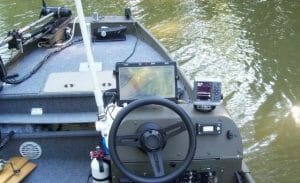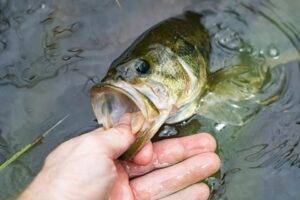
 It is everyone’s joy to come back from a fishing expedition either alone or in the company of others with a bright smile of achievement boosting of the large scale of fishes caught during the painful experience. But how often does this occur? The lack of the right tools and information produce bad results hence we do not get as much fish as we would have wished for making our fishing experience unpleasant.
It is everyone’s joy to come back from a fishing expedition either alone or in the company of others with a bright smile of achievement boosting of the large scale of fishes caught during the painful experience. But how often does this occur? The lack of the right tools and information produce bad results hence we do not get as much fish as we would have wished for making our fishing experience unpleasant.
Modern-day innovations have led to various solutions to fish finding and produced various gadgets but this guide streamlines your choices based on various criteria. This guide spaces you the technical details and goes straight to important features to look out for. Find more information about the best fish finders here.
Water Depth: Choosing a fish finder to produce result depends well on the depth of water you will be exploring. Fishfinders with frequencies ranging between 192 kHz and 200 kHz are recommended for shallow waters while those of low frequencies e.g. a range between 50 kHz 80 kHz are best for deep waters. If you explore both deep and shallow waters, you can get a fishfinder GPS combos under 500 which allows the flexibility of changing frequency range.
Power: As this is the ultimate guide, the power of a fish finder is of high importance. Although this also depends largely on the water depth to be explored. The deeper the depth, the higher the power required for accurate detection. If cost is not an issue, it is recommended to get a fish finder of high watts. This increases the speed at which detection is carried out and increased your chances of locating fishes faster.
Transducers: The transducer is an integral part of a fish finder. It is responsible for how we see water objects. It does this through sonar waves going to and from the device which is then interpreted on the display. For flexibility, a transducer with a cone of 20 degrees is perfect for various water depths.
Display: This is a very important feature to look out for as this improves the amount of detail the fish finder display can produce. The higher the resolution, the more quality you get. An average display specification should be a minimum of 240 x 360 pixels. A fish finder with a good display is a good investment. Do not go for a black and white display, unless you want to be left behind. Always go for a color display.
Water Resistance: On a final note, this is dependent largely on the kind of vessel you will be using for your expedition and how likely it is for water to come in contact with your fish finder. Prevention is always the better route than seeking a repair when your fish finder gets underwater as it is cost effective. I would recommend you get a fish finder with JIX/IPX rating ranging from 6 to 8. With this rating, you are well safe from water splash or a case of submersion.
The right fish finder not only boosts your chances of getting a better return on effort, it adds more thrill of achievement on your fishing expeditions giving you a delightful experience.








